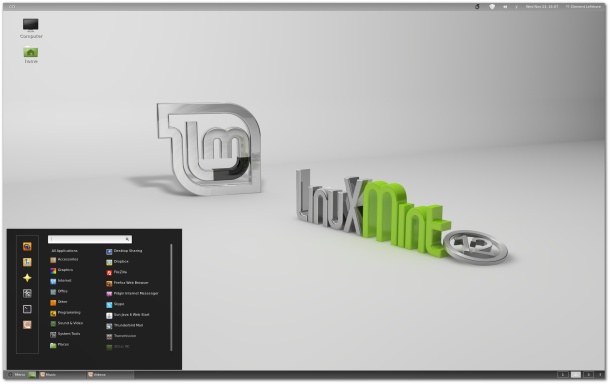The M-word that's Linux's curse

The development of the live session is major Linux achievement, yet it also embodies the shortcomings of the open-source community when it comes to marketing its software, says Dmitry Kaglik.
Klaus Knopper is a great man. Who could argue with that? He brought into the Linux world the very thing that everyone uses and appreciates: the live session.
Live session is a way to run a Linux or BSD distribution from a CD or, more recently, from a DVD or USB drive. It makes you independent of the data on the hard disk — technically, the computer need have no hard drive at all.
Many GNU/Linux and even BSD distributions nowadays offer live versions. Most teams actually only produce a live image with an option to install. Very few still provide only the installation ISO image. Some still have separate live and install images, but usually the live disk can be used for installation as well.

Can Linux and all its various distributions get better at marketing itself?
It's worth mentioning that there's a separate category of distributions that are solely intended for live usage, and not for hard-drive installation. For those distributions, such as Knoppix, Slax, Puppy Linux, and Porteus, the intention is to provide a free-standing, independent live system. Even if there is a way to install the operating system on the hard drive, that is not the real purpose of these distributions.
But let's come back to the teams who produce live images intended for a future installation. What is the purpose of the live disk in this case?
- It's a business card.
- It's a free trial offer.
- It's a shopping window.
- It's a point of sale.
- It's the place where user sees the system for the first time.
It's good if the user already has a firm intention to pass quickly through the live session and start the installation process. No problems, in that case. The details of the live system are not the relevant issue.
But what if the user wants to play with a live system before the installation? What if he or she wants to check hardware compatibility? What if he or she wants to check for the existence of some favourite applications in the repositories?
Then the distribution team has a problem. There's a good chance the user will see issues that arise only in the live session itself. These issues could be unpolished integration of applications, non-functioning search in the package manager, or a non-working wireless internet connection.
Put yourself in the shoes of a newbie user, whose thinking may go something like this: "The issues in this Linux distribution are just too annoying. I'm not sure I want to waste my time finding a way to fix them myself, even if I could. I'd have to look in the forums and wikis and I don't want to do that. Plus those ugly wallpapers I see now on my desktop?
"There are also other distributions that people say are more user friendly, which I'd better check out. Or perhaps I'd better stick to my good old Microsoft Windows. At least it works, and I know how to use it."
Are these the thoughts a distribution team wants to provoke in a potential user? I bet not. They want their system to be appreciated and popular. But they need to deserve that popularity first. So the software needs to be:
- User friendly
- Polished
- Bug free
- Cute
So distribution teams need to make more efforts to get the user to install their operating system, making it something that is good enough to actively sell their product. They need to remember that whatever is in the installed version, it is not relevant until the user loads it. Until then, only the live CD is speaking for the distribution.
Yes, this is marketing. Marketing doesn't always sit that comfortably with the spirit of open source and freedom, but it's something that is severely lacking in the Linux world. Perhaps it's the weakness that goes some way to explaining why Linux struggles to overcome the psychological barrier of five to 10 percent of usage on desktops.
Dmitry Kaglik, who goes online by the name DarkDuck, is author and owner of Linux Notes from DarkDuck, a blog dedicated to Linux and everything around it.